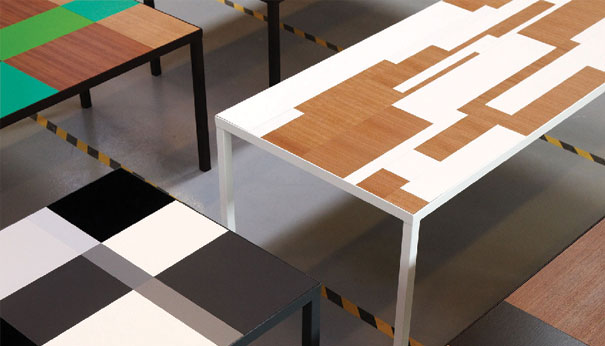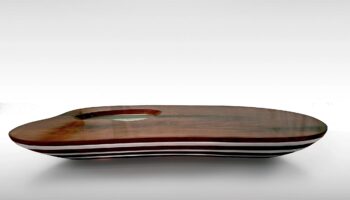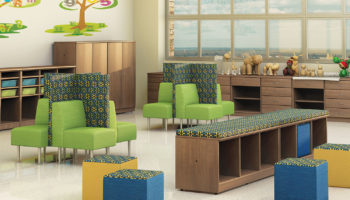Vibeke Fonnesberg Schmidt’s Recycled Tabletops
In the venerated history of Danish design, names like Arne Jacobsen, Poul Henningsen, and Verner Panton are at the forefront, yet this new millennium has cultivated a generation of Danish designers who are innovative and iconoclastic in their own right. Recently-profiled firms like Muuto and Fredericia, and designers like Thomas Pedersen and Susanne Grønlund, represent-from an A and D perspective–the contemporary face of Denmark.
Dining Tables. Designed by Vibeke Fonnesberg Schmidt.
So what does this particular visage have to tell us about the creative output from Copenhagen? I certainly can't speak to the talents of the entire country, but I can say this-the Danes seem to have a particular way with wood. In view of the Scandinavian tradition, that's hardly unusual, but looking at work like that of Danish compatriot Vibeke Fonnesberg Schmidt, 2010 signifies a whole new take on hand-crafting.
Fonnesberg Schmidt's Recycled Tabletops are not only brightly colored and creatively assembled, they're (as you might have guessed) re-claimed. Not that there's anything unusual about that either, though the origin of Schmidt's materials is a bit of a coup: "The tabletops are made of leftover wood from the Danish kitchen manufacturer Multiform. The patterns are constructed of wood, laminates, and handpainted wood." What's more, the project was conceived and carried out at Denmark's National Workshops for Arts and Crafts. In toto, these particular tables thus represent an intriguing nexus of collaboration: between public and private, political entity and individual artist, manufacturing and design.
This last pairing is particularly encouraging, since it represents the type of sustainable materials use that becomes more crucial every day. It also has given curious thinkers like Schmidt the impetus to work within certain constraints: "I always work with geometrical shapes, but it is important for me to add some sort of distraction. In this case the randomness of the materials I use makes a contrast to the strict compositions. It is a way of making order in the chaos of different materials."
If I might paraphrase, it sounds like Schmidt's formula for these recycled tabletops is as follows: (distraction)(geometrical shape)/random material = contrast + strict composition. I barely made it past ninth-grade algebra, yet I'm quite certain that this equation is the gospel truth.





Leave a Reply